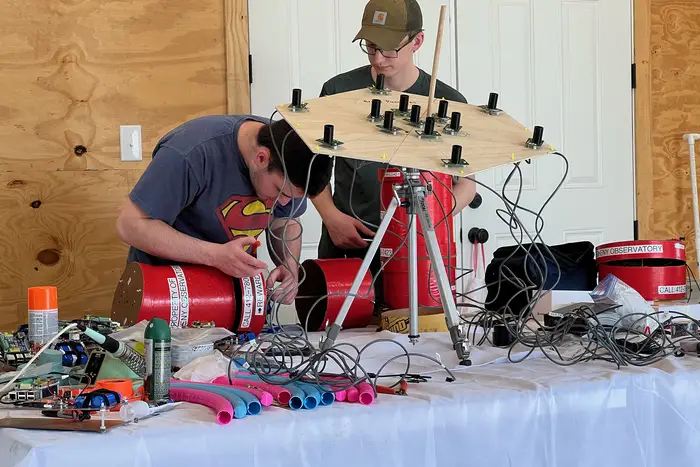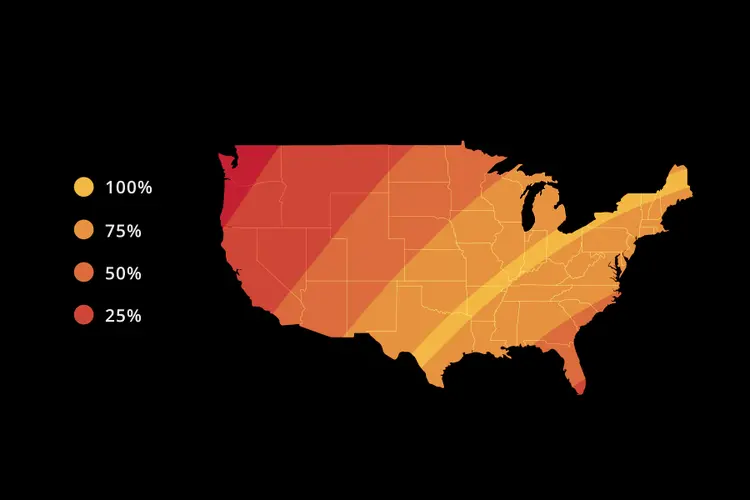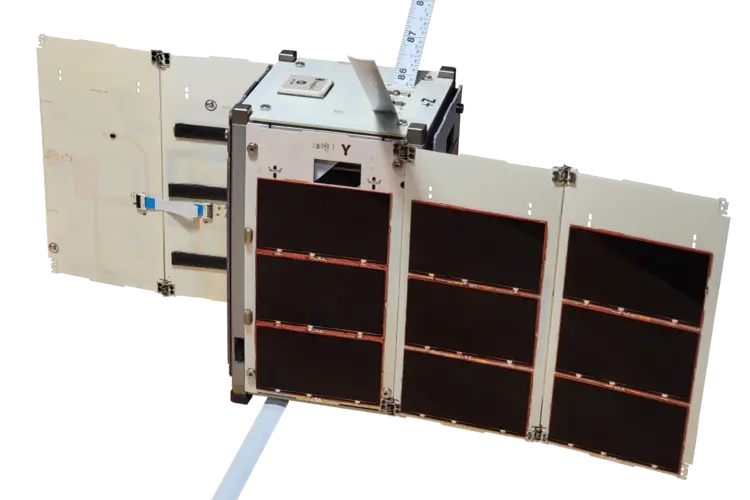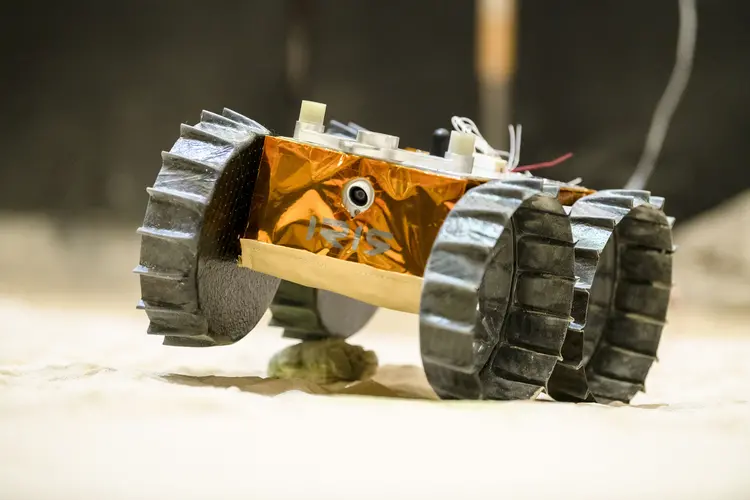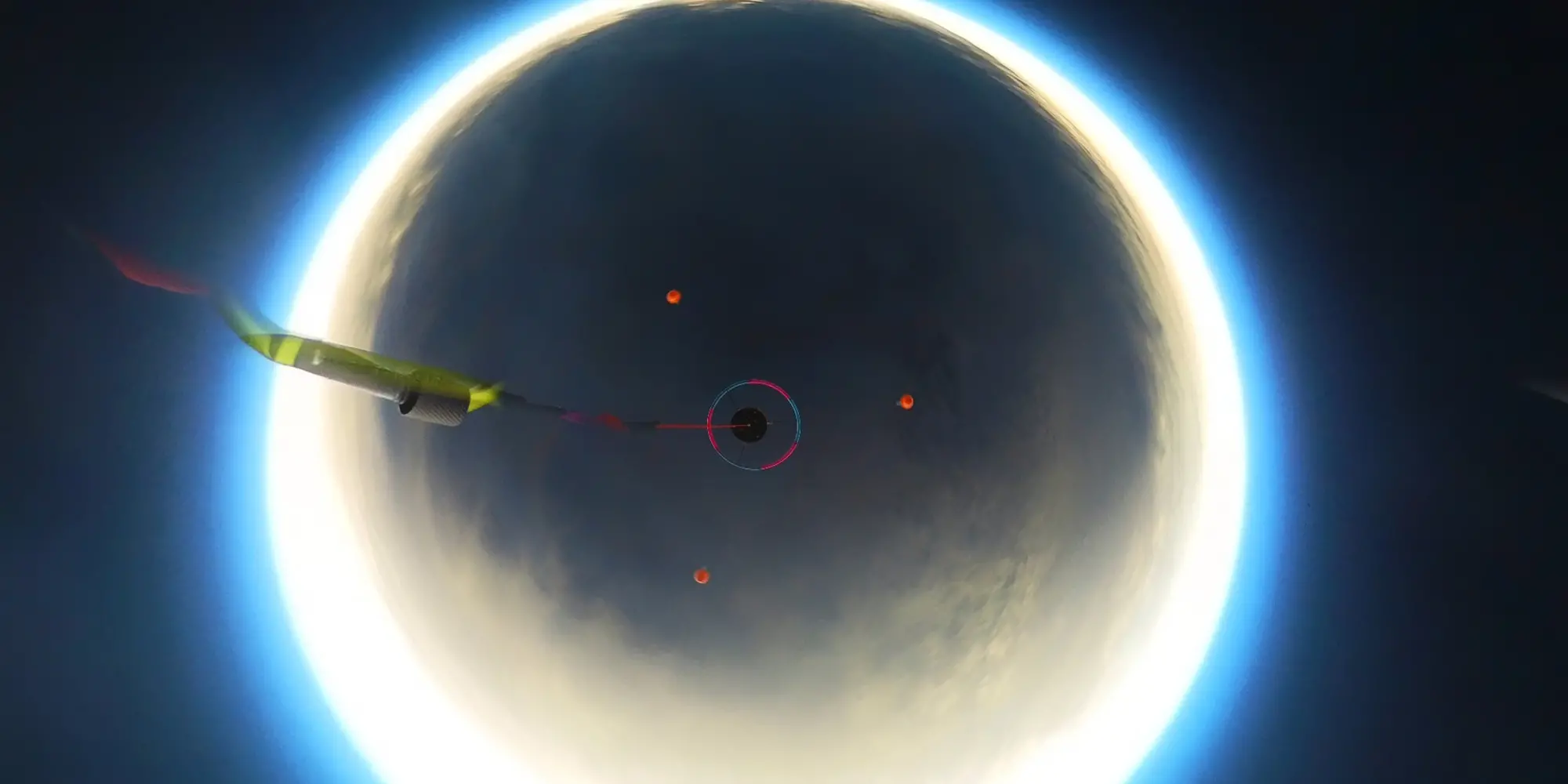
Research During Solar Eclipse Could Shed Light on Shadow Bands
Media Inquiries
Clouds hid most of the April 8 solar eclipse for Carnegie Mellon University physics(opens in new window) senior Norris Bach. But from his vantage in rural Texas Hill Country he still had a thrill. Bach was there with a team of researchers chasing a phenomenon known as shadow bands.
"The view from the ground was obscured by a dense layer of clouds," Bach said. "We did get to briefly see the eclipse peak through the clouds several times, and the darkness of totality was truly a sight to behold. The overcast conditions prevented us from seeing any shadow bands on the ground, but our balloon produced great data that we are currently analyzing."
These shimmering, wiggly bands seen on the ground and on light-colored surfaces, are often claimed to be caused by the chaotic refraction of sunlight minutes before the moon completely covers the sun. The leading hypothesis is that shadow bands occur when sunlight travels through turbulence in the planetary boundary level in the troposphere. This region is typically about 10,000 feet above the earth’s surface.
David Turnshek(opens in new window), a professor of physics and astronomy at the University of Pittsburgh who led a team of undergraduates studying the 2017 total eclipse, found that this may not be the only explanation for shadow bands. His team's 2017 observations, obtained from a high-altitude balloon at 80,000 feet, indicated that the turbulent layer in the troposphere wasn’t causing the shadow bands; rather they primarily originate above the Earth’s atmosphere.
Turnshek wanted to investigate this alternative theory during the 2024 solar eclipse, so he formed the Pitt Shadow Bandits. Bach and Jeffrey Peterson(opens in new window), a professor of physics at Carnegie Mellon, helped develop instrumentation for the project.
"Over the years, I've built a large variety of instrumentation in the service of a particular cosmological problem," said Peterson, who has built novel radio telescopes at the South Pole and other locations. "The science comes first, and if I can figure out a clever use of an antenna or a nice trick with the electronics, I can work with a student to design and test it."
Bach is a member of Peterson's lab, and he joined the project to help build the low-noise light sensors, which were designed to detect subtle changes in the level of light from data being collected by instrumentation attached to three high altitude balloons launched before the solar eclipse commenced in Concan, Texas, about 80 miles west of San Antonio. An additional 31 balloons carrying radiosondes were also launched, allowing atmospheric properties like turbulence to be characterized.
"The research I'm doing with Dr. Peterson mostly focuses on signal processing and a lot of hands-on hardware work," Bach said. "So, if we detect our shadow bands in the stratosphere, then we know that light refraction in the lower troposphere can't be the only cause of them."
Bach, Peterson, Turnshek and the Pitt Shadow Bandits worked for months building instruments and setting up the experiment. During the Oct. 14, 2023, annular eclipse — where the moon did not completely cover the sun — the team conducted a test run in Concan.
"We found a lot of areas that could be improve in our system, and we found some issues with our light sensor as well," Bach said. "We made a lot of modifications."
During the April solar eclipse, clouds impeded the team's ability to gather data from the ground, but the balloons floated above the fray. Peterson said they hoped to find the three balloons and their payloads once they landed.
"That's always very difficult," Peterson said. "You don't know where they're going to land."
Despite the balloons drifting up to 200 miles away, the team managed to recover sensors the day after the eclipse. The researchers have not processed the data yet, but the data collection effort was successful, and what they have looks promising.
"It's exciting to look for the shadow bands from the stratosphere," Peterson said. "Looking at new data is like unwrapping a present; you don't know what to expect."
Turnshek said that collaboration was essential to the success of the experiment.
"Norris and the other students optimized the configurations of our light sensors, which were the most important part of the project," Turnshek said. "Jeff has been invaluable to our efforts as we've been guided by his strong technical background as we developed low noise light sensors to study the shadow bands."
Though it will take time for the researchers to analyze the data and share their findings, they said that they were hopeful that their results will help show how shadow bands are cast.
"Shadow bands been known about since the 1800s, and there are reports of them being observed nearly 1,000 years ago, but they haven't been investigated super deeply," Bach said. "Being able to determine the actual physics behind them is really exciting. We might be able to close the book on this."
